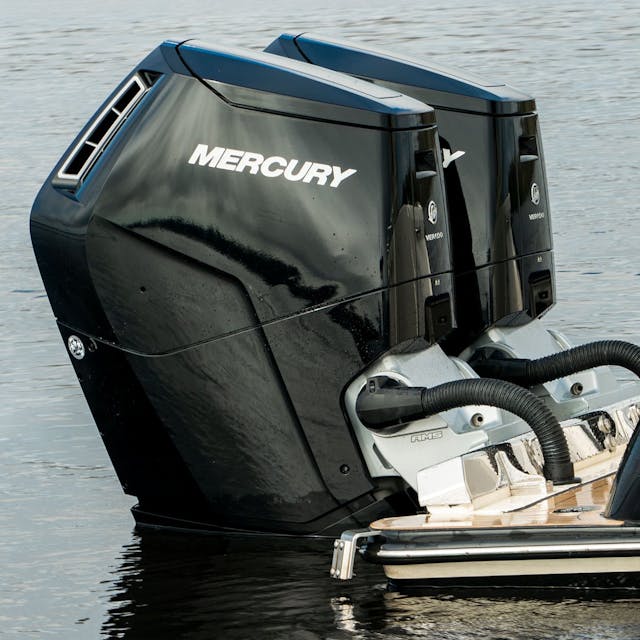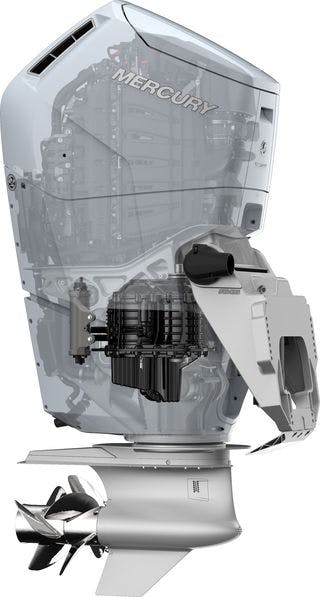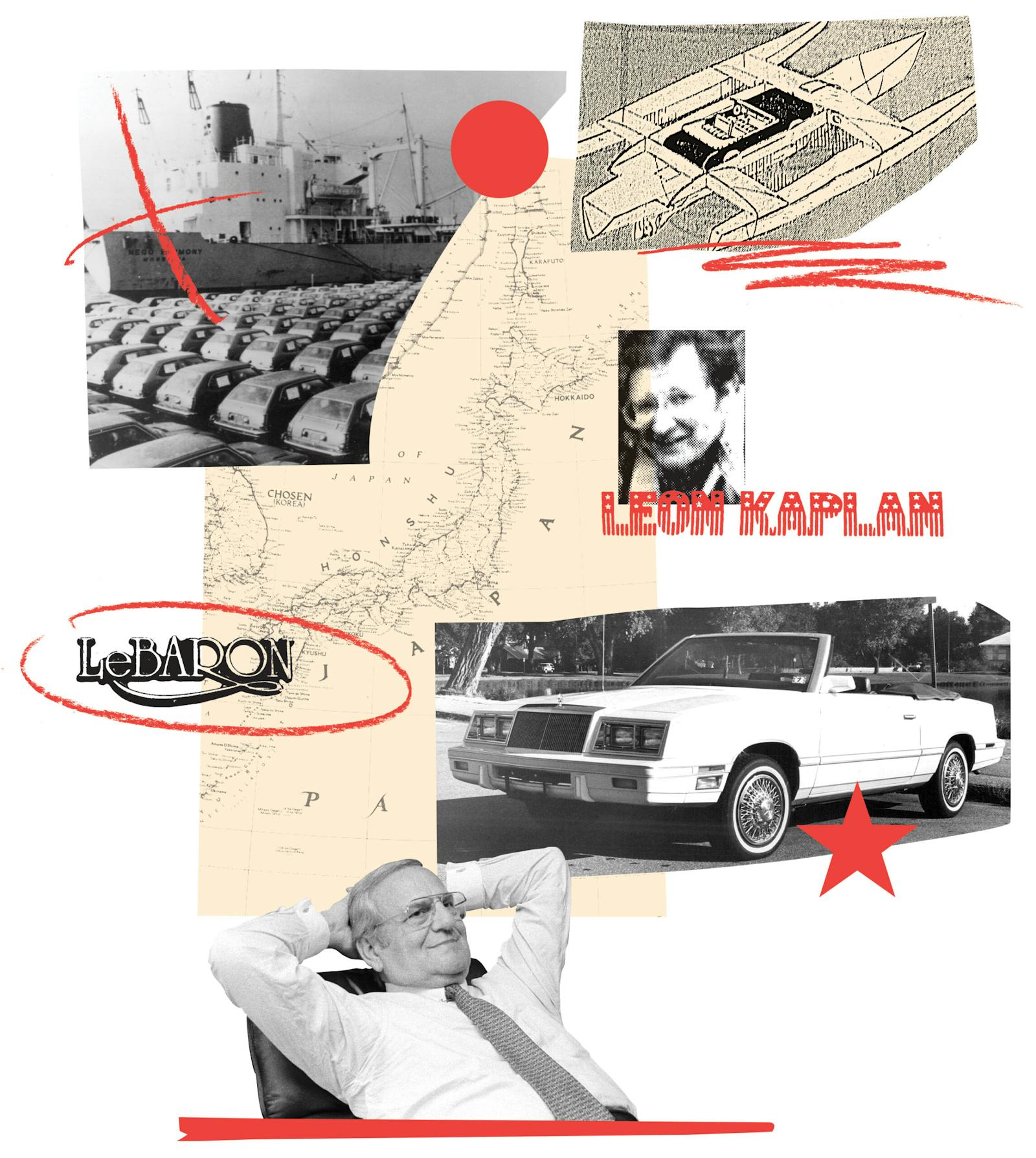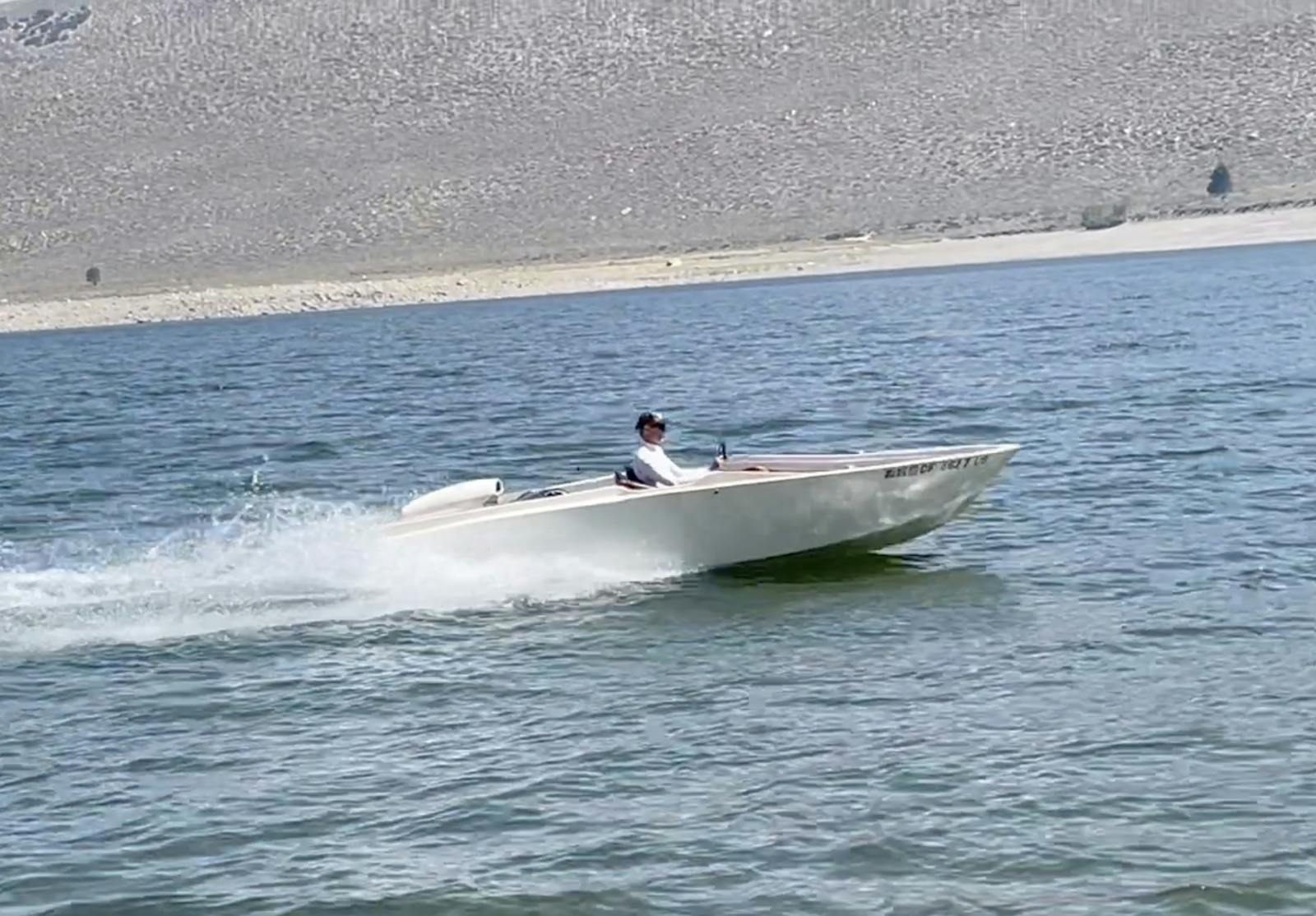Media | Articles
Internal combustion engines are alive and well … in the water
Multiple automakers have set their course to have entire electric-only product lines. You wouldn’t be called crazy to think the internal combustion engine appears to be in its final years—you would, however, be wrong. The internal combustion engine is alive and well; it’s just in the water, not on the asphalt.
That’s right, all the piston heads out there could be buying boats to use as donor transplants for electric car chassis. Don’t believe it? While automotive engine development is stagnating, Mercury Marine recently announced a naturally-aspirated, 600-horsepower Verado V-12. That’s something that isn’t happening the automotive world anytime soon.
The new Mercury is a outboard engine, meaning the 12 cylinders that combine to displace 7.6 liters are stacked vertically with the outdrive at the base. This engine is especially unique due to a two-speed transmission being incorporated between the crankshaft and propeller. The transmission has a 20 percent gear difference between gears, which is the polar opposite of the 70–80 percent difference between first and second a vintage GM Powerglide trans. That small difference in gear ratio shows how tall and broad the torque curve on this engine is.
Which brings up two items you might be thinking about. Yes, these engines are subject to emissions controls. Also yes, there is at least some concern over efficiency. While the emissions controls and fuel efficiency expectations are both lower than those in the automotive world, they still exist as hurdles for Mercury, yet this V-12 exists anyway.

The outboard design of these engines may seem like a downside to the uninitiated, but the high-horsepower, center-console boat world has been around for a long time, and it is not uncommon to see a craft with three 425-hp units hanging off its transom. To reach comparable power it would take just two of these bad mamajamas, and you would see an increase in efficiency having just two outdrives in the water compared to the three of the other setup. The Verado 600 engines weigh in at a substantial 1200 pounds each, but with a new design that steers using only the outdrive—rather than turning the entire engine—steering is better, and the engines can be fitted easier onto certain hulls.
Marketplace
Buy and sell classics with confidence

Converting an outboard like this to use in a traditional automotive application would likely be a huge task, but that hasn’t stop customizers and builders in the past. With electric motors gaining in popularity, it could be lakes and rivers where we go shopping for the perfect piston engine to shove in a project car.
What would you like to see this engine adapted to? Tell us in the comments below.
















